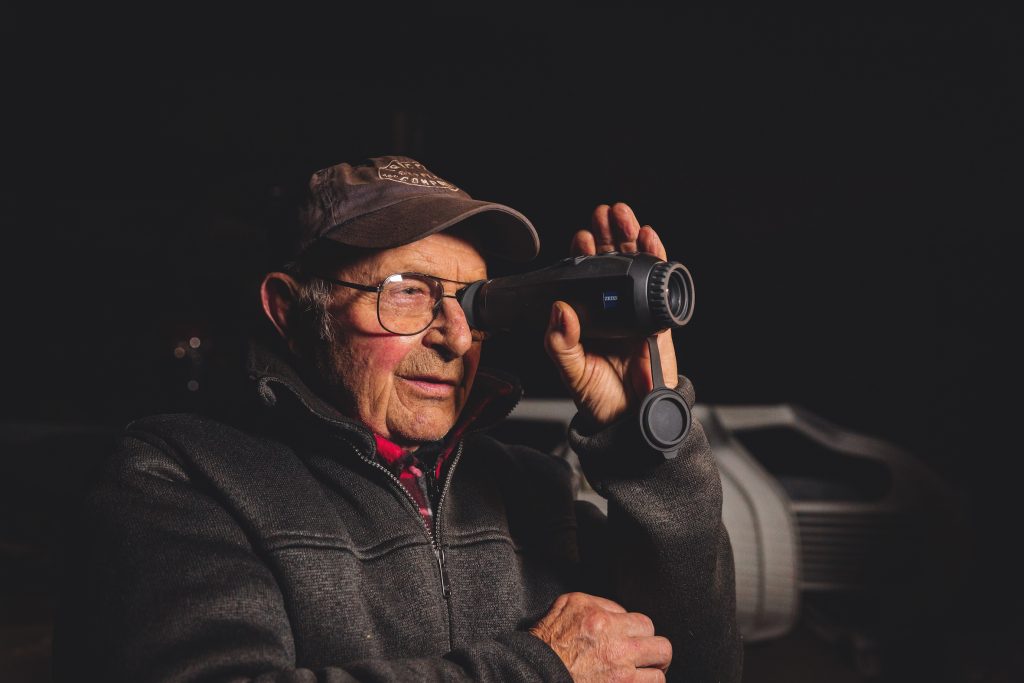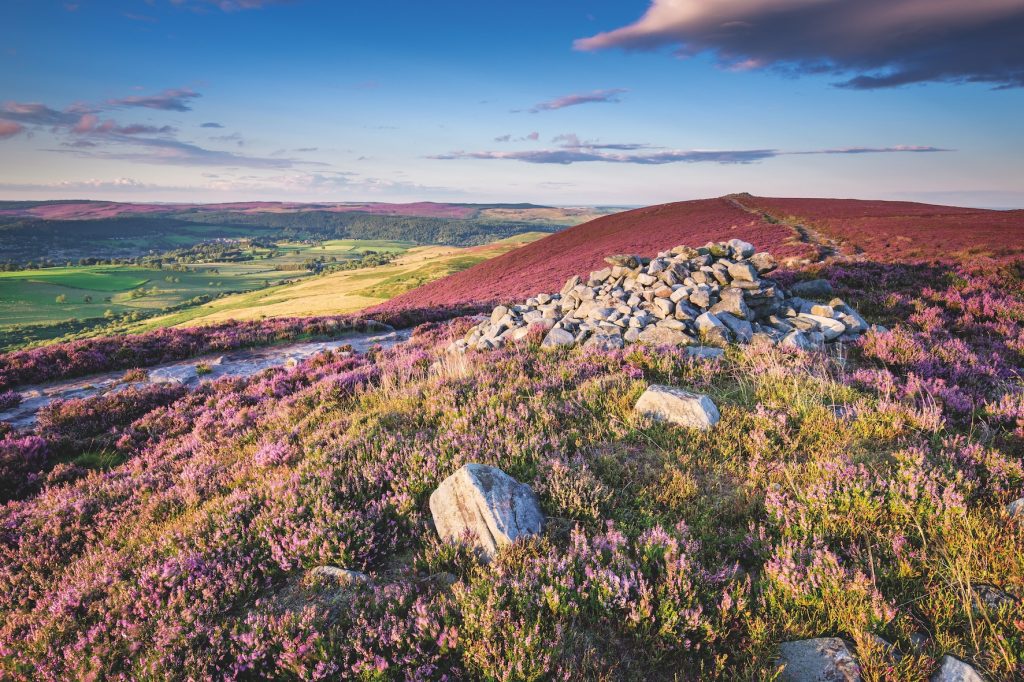Win CENS ProFlex DX5 earplugs worth £1,149 – enter here
Want to be better at gameshooting? Shooting clays is the way to do it …
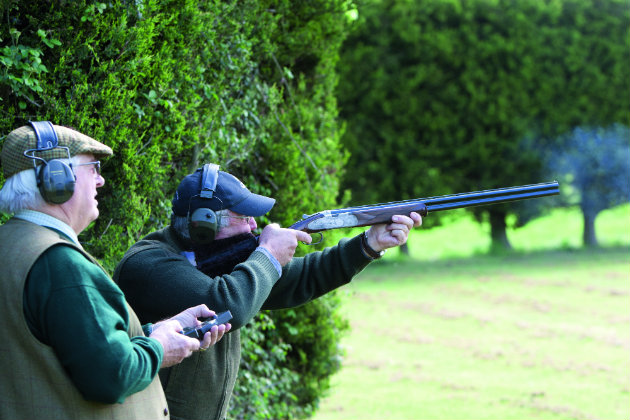
Practising on clays is something that gameshooters shy away from. Most will wait until the first day of the season or until all has gone wrong before putting in some practice. I have never really understood this mentality and it is frustrating listening to some of the excuses. The most frequent is that clays have nothing in common with game, or that clays slow down and game speeds up. Practising on chondels, battues, bolting rabbits or springing teals will have no benefit to your driven gameshooting, as they do not represent the quarry and would only benefit the shooter if they are hoping to improve their clayshooting. But standing under good simulated targets can mimic the correct angles and speed of the birds you are hoping to shoot.
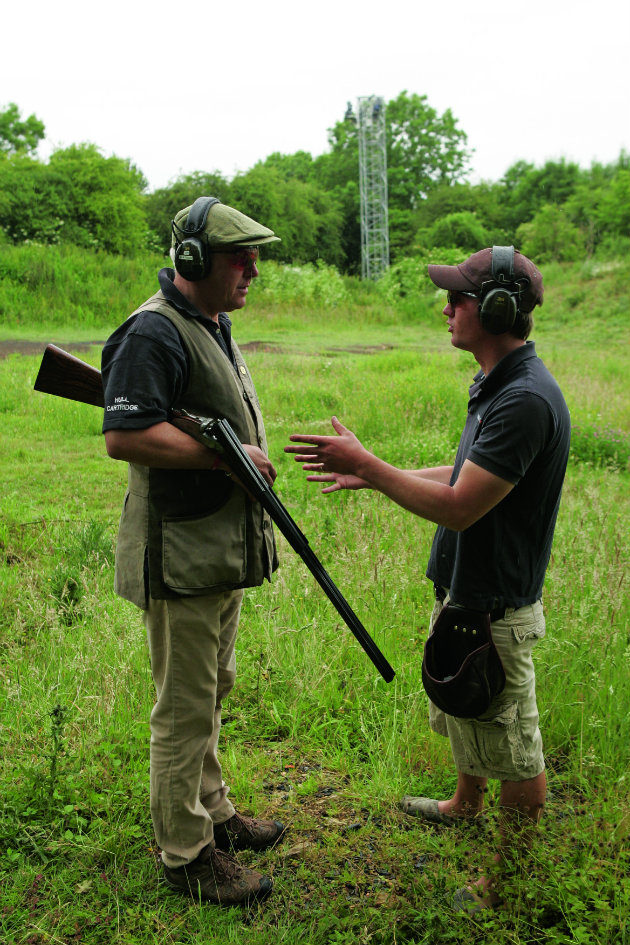
Tom (right) with Edward Watson of the Oxfordshire Shooting School – finding a good instructor is vital
Instruction is key
It is important to be instructed by someone who knows what they are doing and is recognised as an experienced game Shot and instructor. If I wanted to practise skeet I wouldn’t go to someone who specialises in FITASC. The same should go for game Shots. An instructor who can work with your wishes, take you forward into the field and put you into situations that are realistic and relevant to what you are shooting and where you are going to shoot is important. Before you book your lesson inquire into the instructor’s experience and speciality or you could be wasting your time and money.
Simulated days for practice and fun
Simulated days are great fun and, if run well, can really help with practice. They can also provide a simulated situation that will help many game Shots feel more confident. These simulated days are a perfect opportunity to take your instructor with you, as they can highlight problems that you may have in the field. Beware, however, because it is easy to get over-excited and end up trying to shoot as much as possible, becoming tired and not benefitting from the day at all. If the birds are presented well, a simulated day is the perfect place to put in sensible practice.
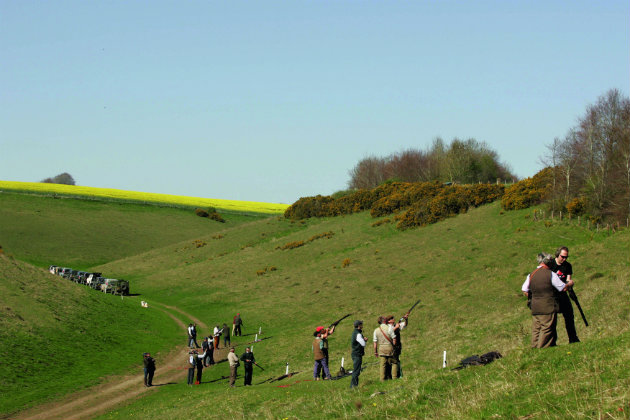
Practising on clay grounds during the close season will pay off when the next gameshooting season starts
Pheasants
Master the lower bird first before getting over-excited on the high pheasant. Remember the top Shots are consistent across the board. Try to practise under a tower that offers different windows of visibility, with a trap that can vary the angles for you.
Grouse
Find a shooting ground with an excellent simulated grouse butt that offers many realistic varied birds.
Partridges
Clays must be shown in simulated coveys if possible so practise can be made on picking a bird, and try to vary simulated driven birds. Shooting midi-clays is advisable.
Clays as practice
Don’t shun the clay ground. Pre-season practise is very important and if instructed correctly with good simulated birds this can really help get your season off to a flying start.
Instruction: Make sure you are with an experienced game Shot and instructor, especially for grouse, it is such a specialised shooting situation. Ask the question before going for a lesson, or you could be wasting your time and money.
Simulated days: These are great, but don’t get too excited and limit your shots — make the most of your practice. An instructor with you on the day can highlight any problems that may occur for you when in the field.
Tackling the quarry and relevant practice
Grouse
Not everyone is lucky enough to have the opportunity to shoot grouse, but if you are one of the rare few, what should be your plan of attack in practice?
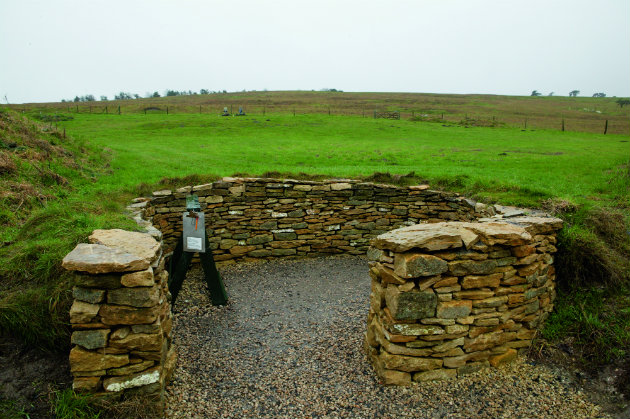
Find a shooting ground that has a good simulated grouse butt that feels realistic to help to prepare you
The first thing is to find a shooting ground that has a good simulated grouse butt. These are few and far between. Standing in a hole in the ground shooting at floppy hedgerow partridge targets will not tune you in for the real thing. It will only lull you into a false sense of security. You need varying birds at different angles and speed challenging the shooter.
The butt must feel realistic so that you can concentrate on the all-important safety aspects that come with shooting on a moor. It is essential to be 100 per cent confident in what you are doing; without this you will never shoot safely and to the best of your ability.
Varying the target
The targets must vary, not just simulate an easy driven bird. Butts that can offer coveys simulating settling birds, low crossers, close angles, short windows, slightly higher birds for those gill drives, and the vital back birds are invaluable, providing varying distance, speed and angles.
I believe too much time is spent practising on driven targets and not enough on those tricky birds out the back door. A good simulated butt with an experienced grouse instructor will prepare you. If the instructor is not experienced on a moor be wary, as it is a specialised situation.
Partridge
These days partridges are shown in all forms. It is not commonplace to shoot them over a traditional partridge ground with coveys bursting over lines of excited waiting Guns. Partridges on many shoots now are shown as smaller pheasants, adding variety to a shoot day.
There are few Guns who don’t enjoy tackling a partridge drive through the day or shoot a brace on their syndicate or farm shoot.
With partridge, you can practise an all-round driven bird. Shooting midi clays to represent the driven bird makes sense as they are smaller, just like partridges. The most common problem I see with Guns who struggle with partridge is usually picking a bird out of the covey. A lone ranger normally gets shot as the focus stays on the one bird. Guns become flustered, especially early in the season as big coveys come over the line.
Concentrate
For practice, concentrate on picking birds from a simulated varying covey and find a ground that can provide this. The key with partridge is to practise relative to where you are going on your partridge days in the country. It sounds obvious, but if you know where you are going, you can concentrate on practising the correct height of bird.
Pheasants
Pheasants are the most common bird shot in the country. They are also the easiest bird for many shooting grounds to simulate. What becomes a challenge is finding a shooting ground that can offer varying heights of bird.
With pheasant practice it is important to make sure you become competent at shooting a simulated bird at a sensible height. It’s all well and good practising high pheasants, but if you can’t shoot a 25-yard to 30-yard bird consistently you will be wasting your time on anything higher.
The jump and technique required to shoot a 30-yard to 40- yard pheasant is minimal, so become sound on the lower bird before you throw yourself into practising the high birds. Good Shots are consistent at all heights, if you struggle on the lower bird due to basic technique, these problems will be exaggerated at distance.
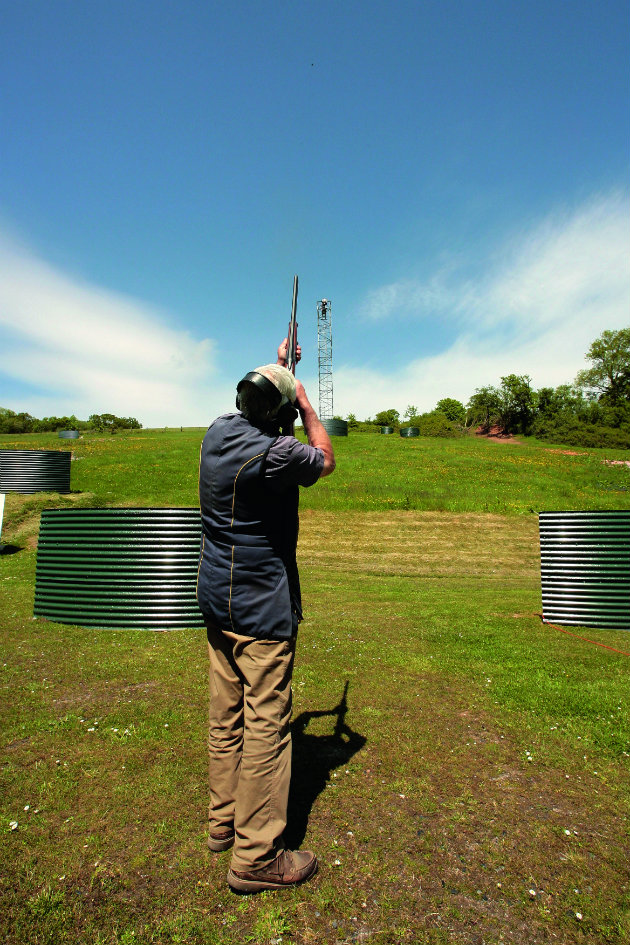
Make sure you are proficient at shooting lower pheasants before you spend time practising on the high birds, try different angles too
Try a new angle
Practise shooting simulated birds at different angles and ideally under a clay trap that can offer different angles, from tight to long, simulating a drive. Practise tight windows and birds coming from a distance. If you know your own shooting proficiency, you will be aware of what you need to practise and make sure that your instructor works with you to help achieve your goals.
Related Articles
Get the latest news delivered direct to your door
Subscribe to Shooting Times & Country
Discover the ultimate companion for field sports enthusiasts with Shooting Times & Country Magazine, the UK’s leading weekly publication that has been at the forefront of shooting culture since 1882. Subscribers gain access to expert tips, comprehensive gear reviews, seasonal advice and a vibrant community of like-minded shooters.
Save on shop price when you subscribe with weekly issues featuring in-depth articles on gundog training, exclusive member offers and access to the digital back issue library. A Shooting Times & Country subscription is more than a magazine, don’t just read about the countryside; immerse yourself in its most authoritative and engaging publication.






